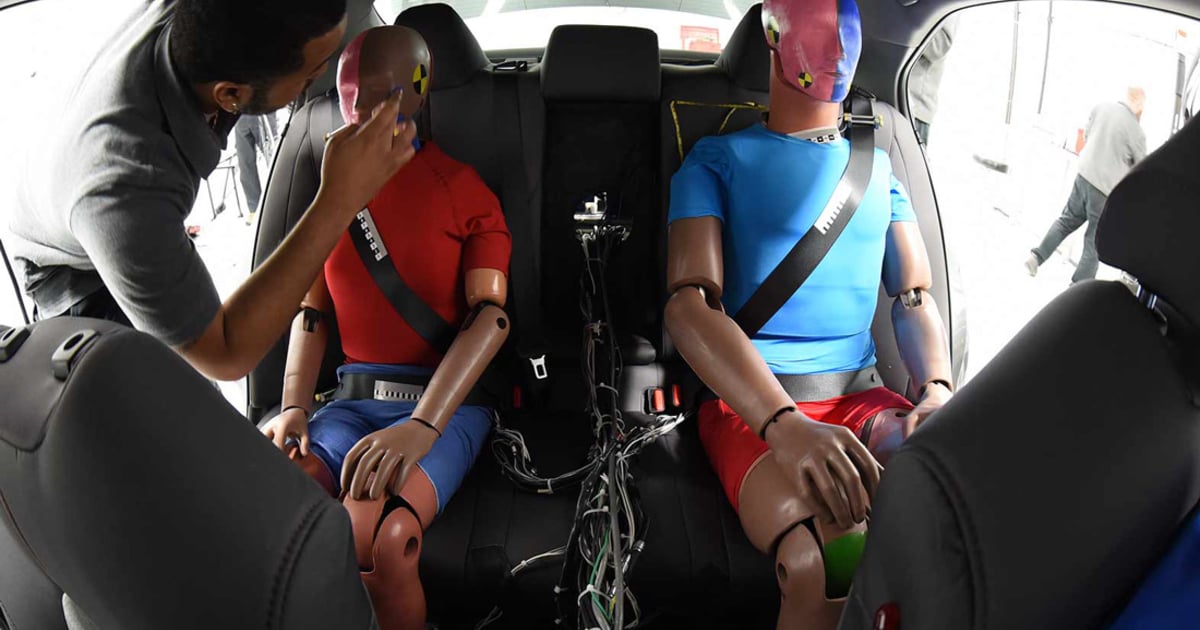
WASHINGTON — The nation’s top auto safety agency proposed a rule Monday that would require automakers to equip vehicles with seat belt warning systems for front and rear passenger seats in an effort to establish consistency and improve seat belt use.
NHTSA’s proposed rule would amend a federal regulation for occupant crash protection known as Federal Motor Vehicle Safety Standard 208, which mandates visual and audible alerts to encourage seat belt use for the driver’s seat but does not require a warning for other seating positions.
For rear seats, the proposal would require automakers to add a visual warning once a vehicle is started that lasts at least 60 seconds and an audiovisual “change of status” warning that lasts at least 30 seconds if a rear seat belt is unbuckled while the vehicle is in operation.
For front seats, the proposal would require an audiovisual seat belt use warning for both the driver and front passenger seats that remains active until the seat belts are secured. It also would require an audiovisual “change of status” warning for both the driver and front passenger seats that remains active until an unbuckled seat belt is refastened.
The requirements would apply to cars, light trucks and most buses as well as multiuse passenger vehicles with a gross vehicle weight rating of up to 10,000 pounds.
Manufacturers would be able to adjust warning signal characteristics, such as frequency and volume, NHTSA said.
The front passenger seat belt warning requirements would take effect on Sept. 1, one year after a final rule is published. Requirements for rear seats would take effect on Sept. 1, two years after a final rule is published.
“Wearing a seat belt is one of the most effective ways to prevent injury and death in a crash,” Ann Carlson, NHTSA’s acting administrator, said in a statement. “In 2021, almost 43,000 people lost their lives on America’s roads, and half of those in vehicles were unbelted. This proposed rule can help reduce that number by getting more to buckle up.”
The agency estimates its proposed requirements would prevent about 300 nonfatal injuries and more than 100 deaths annually.
Michael Brooks, executive director of the Center for Auto Safety, said the proposal “has been an incredibly long time coming.”
“In a nutshell, this rule has taken far, far too long,” Brooks told Automotive News. “It should have been protecting rear occupants in 2017. While we’re certainly glad to see movement out of NHTSA, the timeline involved only raises more questions about whether the agency is equipped to respond to emerging safety issues in a timely manner.”
The Alliance for Automotive Innovation, which represents most major automakers in the U.S., did not immediately have comment on the proposal.
Advocates for Highway and Auto Safety — a consortium of consumer, public health and safety groups as well as insurance companies — said extending seat belt warnings to all seating positions is “urgently needed,” adding that the rule-making was required by Congress more than a decade ago.
In a statement Monday, Advocates’ general counsel Peter Kurdock commended NHTSA for moving forward with the rule-making and urged the agency to complete it “without further delay.”
Kurdock’s group was still in the process of reviewing NHTSA’s proposal and said it will submit further feedback during the 60-day public comment period.